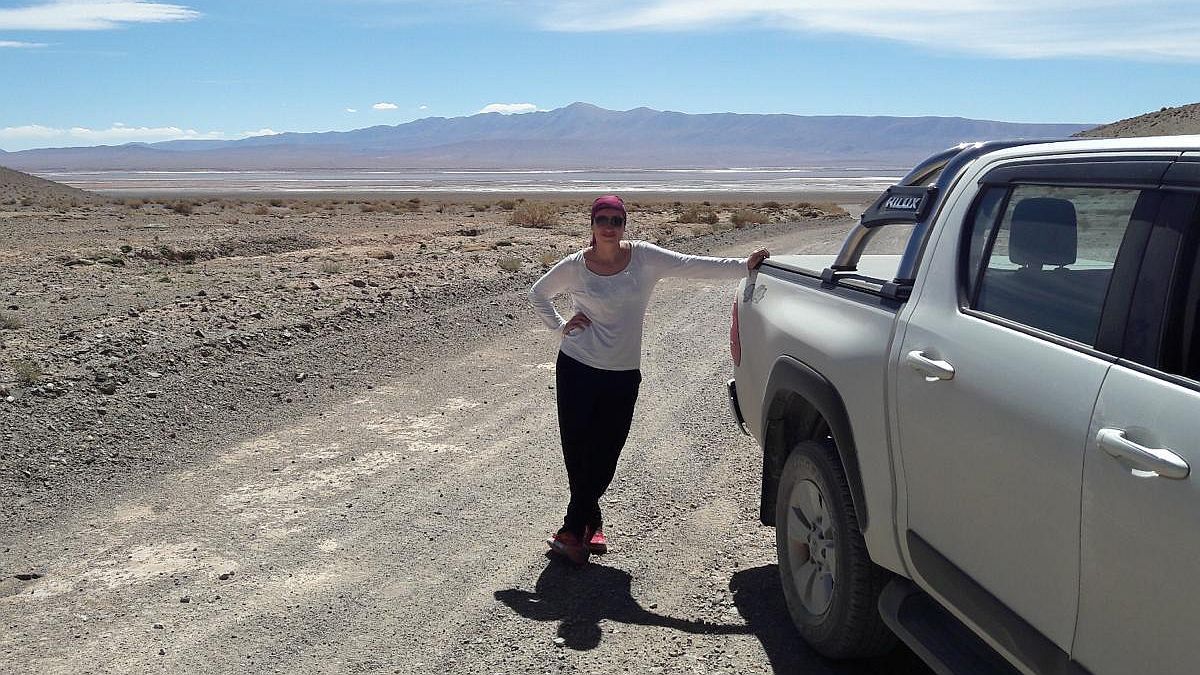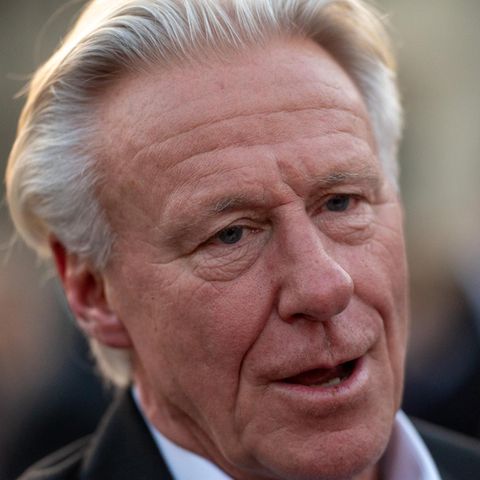image.png
In dialogue with Energy Report, From France, Romina reviews her connection with geology and how she came to realize this publication.
Journalist: How did your connection with geology arise?
Romina Lopez Steinmetz: My mother is originally from Misiones, and in my grandparents’ house, there were what they called at the time, some very pretty transparent stones, which ended up being crystalline quartz, linked to geodes and when we had returned to Jujuy after a family trip we brought back as a souvenir that large quartz, which in fact I have here with me, where I currently live in France, I can’t let go of it because it has great emotional value, and there I remember that dad told me, why don’t you go to the Geology Institute and ask what it is? and that was the first time I set foot in the Geology Institute, I didn’t even know what geology was, in fact, and at the age of ten that link that continues to fascinate me began.
Journalist: Could it be said that you were one of the first to decide to carry out research on lithium, when the mineral was far from having the importance it has today?
RLS: Sure, I started my PhD thesis in 2009. At that time, there was very little information about the lithiumbut people were beginning to talk about it and in fact at that time work had already begun on it. Olaroz salt flatrun by Sales de Jujuy, today the mine and, among other lines of research of my thesis, I added the topic of lithium Because it seemed to me that it was a shame to work in salt flats and not explore that line as well.
Journalist: And how were those first studies carried out?
RLS: I worked in two salt flats. Guayatayocin the Department of Cochinoca in Jujuy, where the values of lithium The maximums that I have measured in my thesis and that have been corroborated today by other mining companies are in the order of 120 milligrams per literwhich is relatively low. But in Large Salt Flats(the salt flat shared by Jujuy and Salta at 3,450 meters above sea level) there are values of lithium The most important explorations have been carried out in Salinas Grande, carried out by private companies. A little later, with my colleagues from Jujuy, we carried out an exploration and we have published, in fact, the results of Salinas Grande and we found more or less the same values that had been cancelled by the companies and which are very interesting, because Salinas Grande today must be one of the non-productive salt flats of most interest.
Journalist: How did the book come about and when was it published?
RLS: “The Book of Argentine Lithium 2024” It was published in May of this year and it all came about in the context of my research that I am carrying out looking for information on brine geochemistry and lithium. Thus, when looking for material, the different projects and different companies appear. What is very curious in Argentina is that despite the importance of lithium, we still do not have an updated database in the country, publicly accessible, that allows us to have a general overview of what the situation is, the status of each project in order to understand where we are, what company is working, what it does, what stage of progress the project is in, how much lithium there is, etc. And since all the people interested in lithium were having the same problems of accessing information, I began to have a database – in parallel to my brine geochemistry research – of the companies that are there, of the projects, and there came a point where I said to myself: ‘the truth is that this is super useful’. It is the same thing that I have needed up until now to work, people too, colleagues who are here or society in general also need to have access to this information, and it is not there, which is why I ended up putting together this book, which at the beginning was not an objective and now it is available for free on the Internet, because the idea is precisely that the information is available and that it is useful.
Journalist: How was the process of obtaining this database?
RLS: The book has more than 300 pages, where all the information about the mining projects related to the lithium in brine, across 56 salt flats and salt lagoons in the Andes of northwestern Argentina. Most of these salt flats are in La Puna and some are in Andean areas that are not within La Puna, but are nearby. These 56 salt flats are distributed throughout the provinces of Jujuy, Santa Catamarca, La Rioja and San Juan.and getting all this information took me several years of work, and headaches to understand how all the information was articulated. A good part of the information is included in the book, not all the projects are there, in fact I am already working on the reissue of the book for 2025, everything is perfectible, and the 2025 book will be more complete and much richer thanks to the contribution of many people since the book was published, who have contacted me to give me information, to exchange information about this database.
image.png

Journalist: How many projects are in the book?
RLS: The book collected data on 123 lithium brine projectsof which 30 have been cancelled and 90 show varying degrees of activity. Of these 90 projects considered active, 38 have not yet reported information on lithium concentrations in the brine, covering 58% of the total concessions granted (1,657,300 hectares). There are projects that are not in the book; I have only included the reports submitted by the mining companies, which are instruments that correspond to a legal obligation for companies, for example, that are based in Canada, Australia, the United States, and that have legal implications for them, so they submit reports that are very complete and very rich in information.
Journalist: Why are companies required to submit these reports?
RLS: Because they serve to ensure that people who have savings or a certain amount of assets, or companies with capital that are interested in investing in mining, have sufficient elements to be able to evaluate the project and see to what extent it could be profitable and what the degree of risk of that investment is. Let us remember that investment in mining is high risk, but also high return when things work out. And those reports, which are actually made to be able to evaluate that possibility of investment in mining, are super rich in information and have been the instruments that I have used to be able to build the database of the book. Many times there is talk of certain projects or certain places that could be of interest in Argentina, but as long as these types of reports do not exist, so complete and so serious, it is very difficult to be able to put them into the book because one does not really know to what extent the project is viable or could really end up being of economic interest.
Journalist: What support or reception did you receive from both the national government and the provincial governments?
RLS: I worked privately and have not requested help from any type of organization, company or the State. I have received feedback, contributions for the 2025 reissue, from many fellow geologists, people from some companies, and some people from SEGEMAR. From the point of view of access to information to build the book’s database, honestly, if I have to say what the greatest difficulty I have had, it is access to the Argentine mining registry. The provinces of Jujuy and Salta have the mining registries accessible online, but not the one from Catamarca, and as for the national registry, which should actually reflect the provincial registries, it has been out of date for several years now.
Journalist: What are your expectations after publishing this book?
RLS: I sincerely hope that it is useful, that it is practical and that it really contributes to ensuring that the decisions that have to be made for the development of lithium mining are based on knowledge of the current situation of what works and what doesn’t, and not just on a myth of saying that it is wonderful and it is the golden one, or that it is a disaster because we are destroying the environment. There are specific problems linked to lithium, so like all human activity it has an impact on the environment, and at the same time there is also an economic opportunity for the population of Argentina that is in need of employment, so these are decisions that have to be made as a society, and if with this book I can help a little bit so that those decisions are made based on specific knowledge, I feel more than satisfied.
Source: Ambito
I am a 24-year-old writer and journalist who has been working in the news industry for the past two years. I write primarily about market news, so if you’re looking for insights into what’s going on in the stock market or economic indicators, you’ve come to the right place. I also dabble in writing articles on lifestyle trends and pop culture news.




